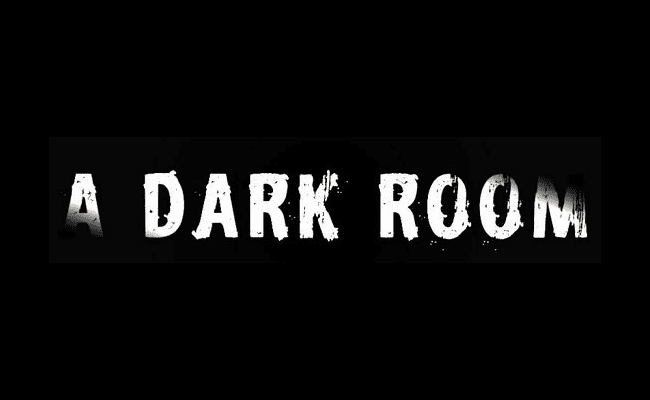This post contains spoilers for A Dark Room.
In A Portrait of the Artist as a Young Man and while still a young boy, the novel’s protagonist, Stephen Dedalus, writes on the flyleaf of his geography book:
Stephen Dedalus
Class of Elements
Clongowes Wood College
Sallins
County Kildare
Ireland
The World
The Universe (James Joyce, A Portrait of the Artist as a Young Man, Dover, pg. 7-8)
As an exmple of a bildungsroman, a novel about human development, maturation, and growing up, A Portrait of the Artist as a Young Man uses this moment to emphasize Stephen’s burgeoning awareness of himself and his relationship to and awareness of the world around that self. Indeed, all human deveopment is marked by this exponentially growing sense of the self in relationship to a larger world. We all begin life with a sense only of the immediacy of the self and its own needs, before becoming aware of a small corner of the world around ourselves, before then becoming aware of how that corner fits into a larger and larger universe.
Playing the browser based version of A Dark Room, I was reminded of this passage from Joyce’s novel. Indeed, I almost feel that the whole game is in some way an effort to represent this model of the growing awareness of self and its relationship to a significantly larger universe and the discovery then of how the self fits into such a vast space.
The game begins on a white screen that says “A Dark Room” with only a modicum of detail about what the environment is like that “you” are in. “[T]he room is cold,” the text reads, then “the fire is dead,” and should you wait a few second, it explains, “the room is freezing.”
In some sense, the game begins almost as if the main character has just been born. Your character, your “self,” is aware only of his or her own surroundings and how those surroundings affect him or her. If the room is freezing, then you are freezing. The only interactive option at this point in the game is to click a button that reads “light fire.”
Lighting the fire will, of course, warm the room. It will also illuminate it, making you and the protagonist aware not merely of themselves, but giving you more clearly a sense of the environment surrounding you and that that environment may be larger than a single room, an environment that may also need to be illuminated eventually: “the light from the fire spills from the windows, out into the dark.” It also very shortly makes you aware that you are not the only self in the world, as a woman stumbles into the now “Firelit Room,” who claims that she can build things if the room is heated for her. As far as self awareness goes, this is a gigantic leap in normal human consciousness from a sense of immediate needs, comfort and warmth, to the needs of others, the comfort and needs of those others. Though, like an infant, the other, you realize, also has needs that you are becoming aware of somehow mirroring your own. Additionally, though, that other, like a parent, is also some kind of provider, someone who will help you out, someone who apparently cares about your needs and ultimately your desires as well.
From there, the geography of A Dark Room, much like Stephen Dedalus’s own sense of geography, expands when an additional tab appears called “A Silent Forest.” This is the place that surrounds the previously dark room, which, of course, also surrounds the protagonist of the game. It is in this space that eventually others will gather, forming a village that you occupy.
That the game incrementally expands in both its environments and in the kinds of rules or systems that govern that environment is something that I have written about before and seems to me relevant thematically, both in terms of gameplay as well as in terms of the narrative premise of the game — as this is a game about discovering the purpose and end goal of the game itself (G. Christopher Williams, “A Dark Room Is the Most Fun You’ll Ever Have with a Spreadsheet”, PopMatters, 2 July 2014). Additionally, this theme seems related to the experience of understanding the self in relationship to the world (as Stephen’s writing on the flyleaf of his Geography book does), as essentially A Dark Room is about initially understanding yourself as a character in an immediate way, in relationship to a room, then in relationship to a village, then in relationship a region, and finally in relationship to the universe itself. Of course then, what the game is concerned with is a consideration of purpose. Similarly, that is part of the consideration that Stephen is musing about by recognizing where he stands in relationship to a much vaster universe than himself. How do I fit into all of this?
That the game ultimately suggests a pretty fundamental difference between yourself and the environment, that you are most likely quite alien from the spaces in which you reside and the people within them and then that you attempt to escape from those spaces into a larger universe, seems to get at the heart of the question of self awareness in relationship to the world. Okay, who am I, what is this place, who are these other people and who or what are they to me, and then ultimately, what differentiates me from the rest of the universe? These are essentially the central mysteries of A Dark Room, mysteries familiar to the player because these are questions that are commonly asked as anyone’s sense of self incrementally expands as one grows up and then grows into their world.

